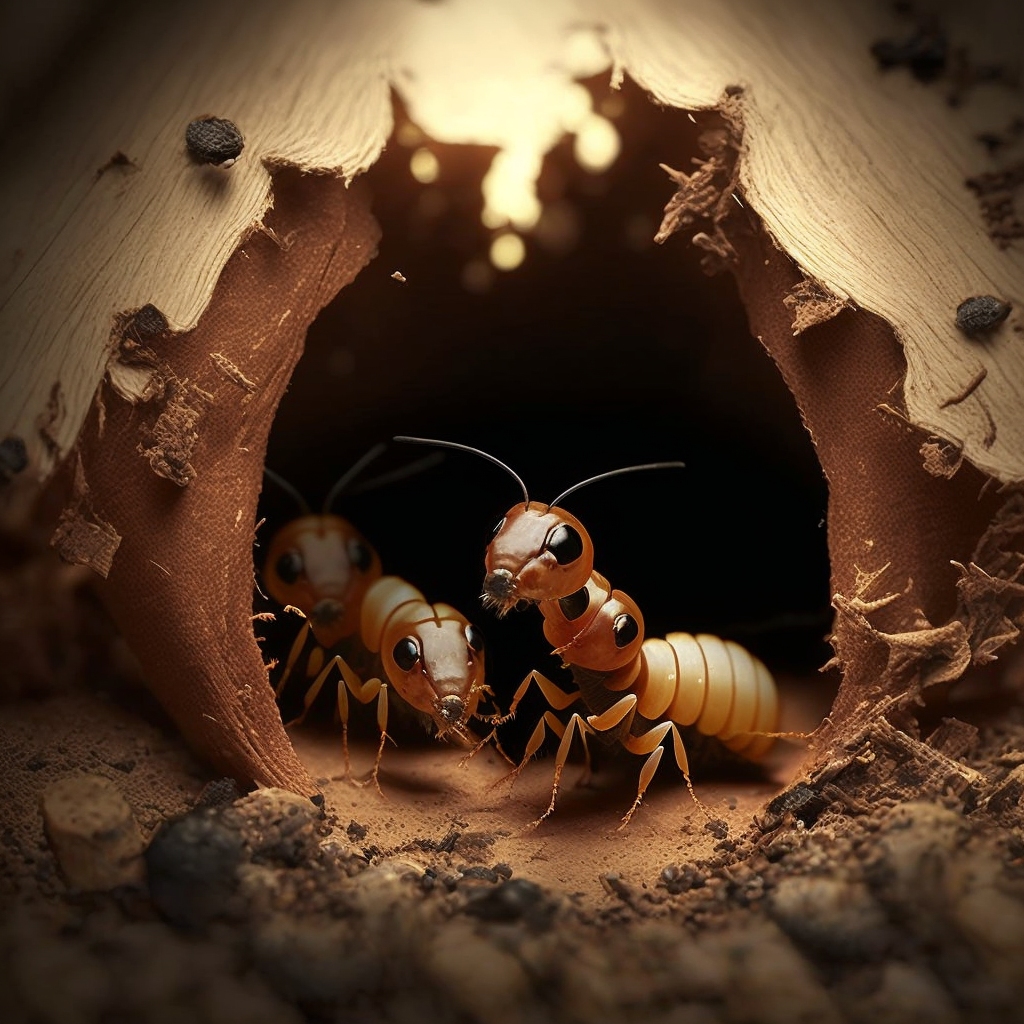20 Things That Causes Termites
- 1. Climate
- 2. Food source
- 3. Nesting habits
- 4. Termites species
- 5. Moisture
- 6. Cracks and openings
- 7. Poorly maintained buildings
- 8. Lack of pest control measures
- 9. Wood piles
- 10. Trees and shrubs
- 11. Landscaping materials
- 12. Stumps and logs
- 13. Outdoor furniture
- 14. Wooden fences
- 15. Wooden decks
- 16. Wooden sheds
- 17. Water damage
- 18. Poor ventilation
- 19. Construction materials
- 20. Age of the building
- Conclusion
Termites are insects that can cause damage to wooden structures and plants. There are several factors that contribute to the presence of termites in a particular area.
1. Climate
Termites are found in warm, humid climates, as they require a consistent source of moisture to survive. They are particularly prevalent in tropical and subtropical regions, but they can also be found in temperate regions with hot, humid summers.
2. Food source
Termites are attracted to wood as a food source, and they are capable of breaking down cellulose found in plant material and wood. They can cause significant damage to wooden structures, including homes, fences, and trees.
3. Nesting habits
Termites often build their nests in the ground, and they are known to tunnel through soil in search of food. They can also build nests in trees, buildings, and other structures.
4. Termites species
There are over 2,000 known species of termites, and each species has its own characteristics and habits. Some species are more likely to infest buildings and cause damage, while others prefer to feed on dead plants and trees.
5. Moisture
Termites require a consistent source of moisture to survive, and they are attracted to damp or wet wood. This can make homes and buildings with leaky pipes or faulty roofing more vulnerable to termite infestations.
6. Cracks and openings
Termites can enter buildings through small cracks and openings in the foundation or exterior walls. They can also gain access to buildings through gaps around utility lines, pipes, and cables.
7. Poorly maintained buildings
Buildings that are in disrepair or poorly maintained can be more vulnerable to termite infestations. Termites are attracted to wood that is already weakened or damaged, and they can quickly cause further damage to the structure.
8. Lack of pest control measures
Homes and buildings that do not have proper pest control measures in place are more likely to attract termites. This includes a lack of chemical barriers around the foundation, and a lack of regular inspections for signs of termites.
9. Wood piles
Piles of wood, such as firewood or lumber, can attract termites if they are left in close proximity to a building. Termites can then use these wood piles as a bridge to access the structure.
10. Trees and shrubs
Trees and shrubs that are in close proximity to a building can attract termites, as they can use the roots of these plants as a bridge to access the structure.
11. Landscaping materials
Landscaping materials, such as mulch or wood chips, can attract termites if they are placed too close to a building.
12. Stumps and logs
Stumps and logs that are left on a property can attract termites, as they can use these as a food source and a place to build their nests.
13. Outdoor furniture
Outdoor furniture made of wood, such as decks, patios, and gazebos, can attract termites if they are not treated or maintained properly.
14. Wooden fences
Wooden fences that are not treated or maintained properly can attract termites, and they can use the fences as a bridge to access a building.
15. Wooden decks
Wooden decks that are not treated or maintained properly can attract termites, and they can use the deck as a bridge to access a building.
16. Wooden sheds
Wooden sheds that are not treated or maintained properly can attract termites, and they can use the shed as a food source and a place to build their nests.
17. Water damage
Homes and buildings that have water damage or leaks can be more vulnerable to termite infestations, as termites are attracted to damp or wet wood.
18. Poor ventilation
Homes and buildings with poor ventilation can be more prone to termite infestations, as the humid conditions can create a more hospitable environment for termites.
19. Construction materials
The use of certain construction materials, such as untreated or uncured wood, can make a building more vulnerable to termite infestations.
20. Age of the building
Older buildings may be more prone to termite infestations, as they may have more cracks and openings that termites can use to access the structure, and they may have more weakened or damaged wood due to age.
Conclusion
To conclude, termites can be attracted to a variety of factors, including climate, food sources, nesting habits, species of termites, moisture, cracks and openings in buildings, poorly maintained buildings, lack of pest control measures, wood piles, trees and shrubs, landscaping materials, stumps and logs, outdoor furniture, wooden fences, wooden decks, wooden sheds, water damage, poor ventilation, construction materials, and the age of the building.
Proper pest control measures, including chemical barriers, regular inspections, and maintaining the integrity of the building, can help to prevent termite infestations.



